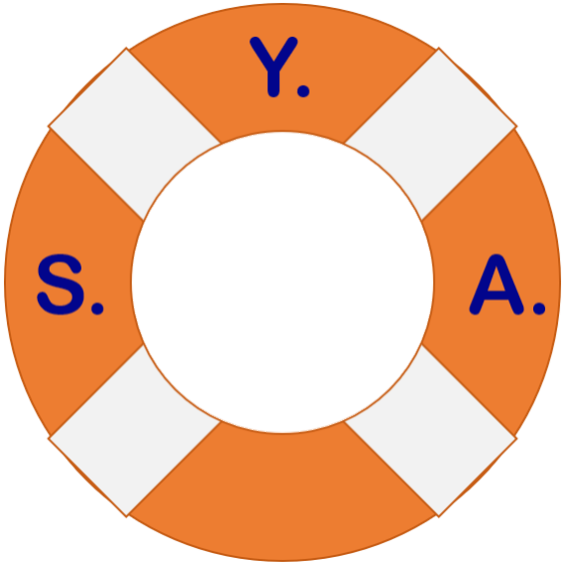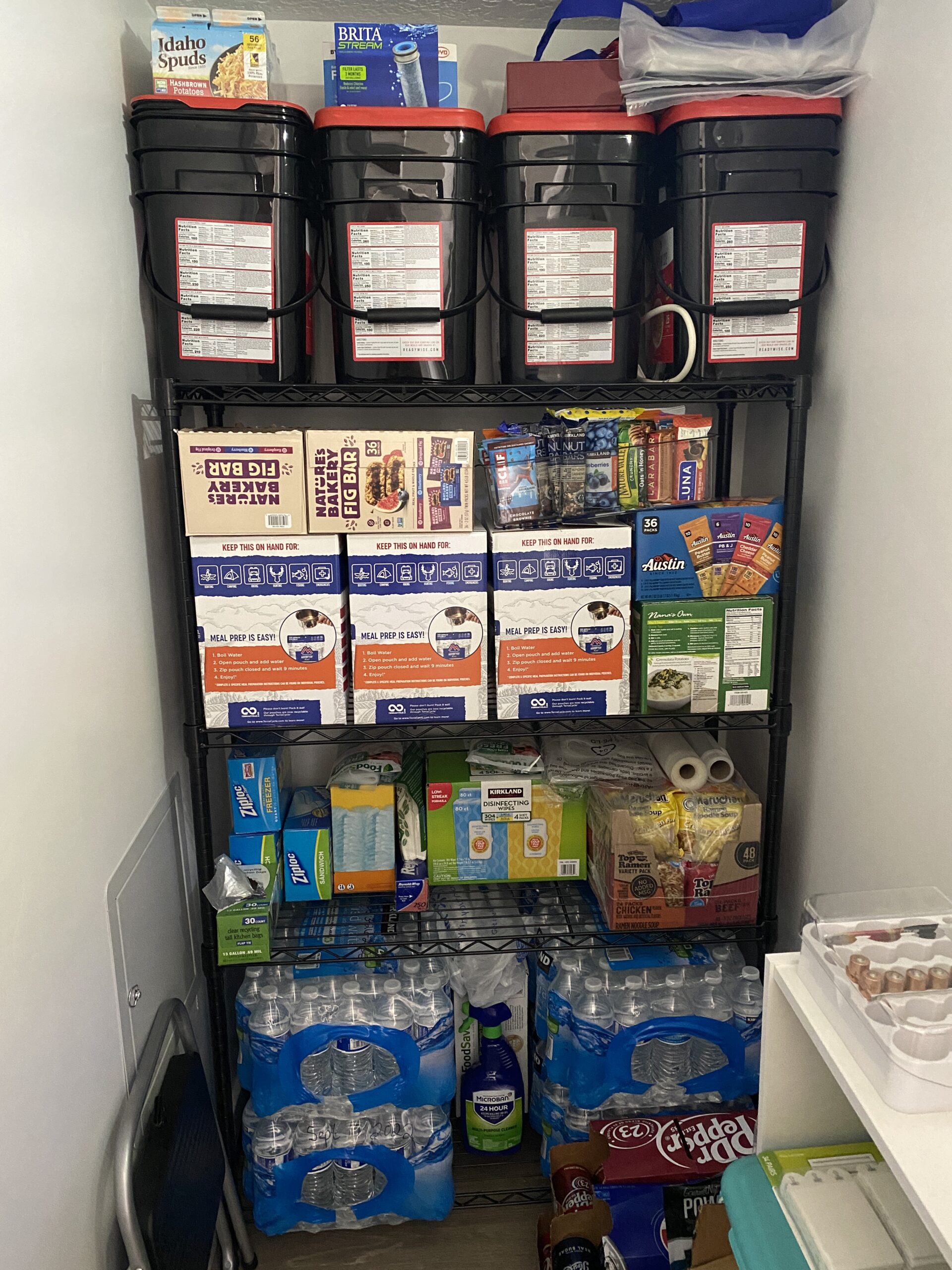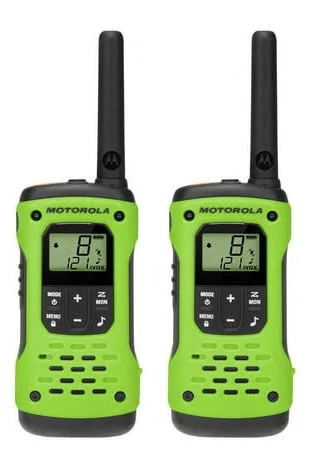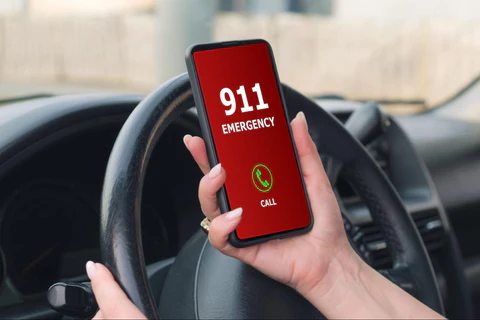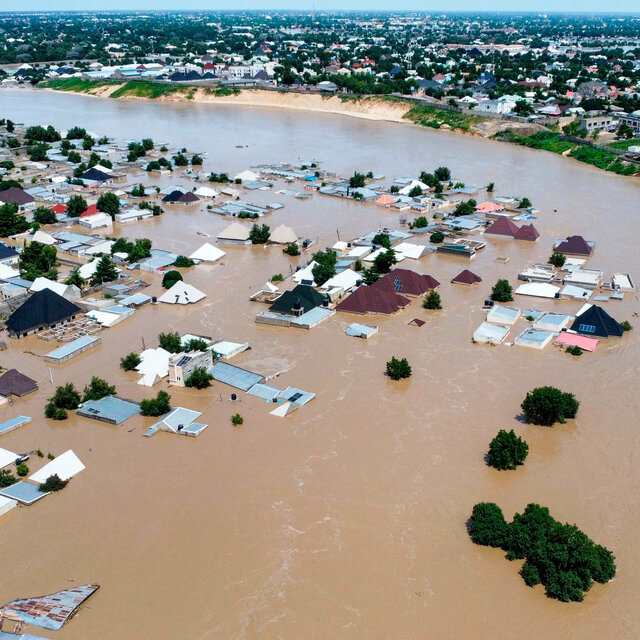Today I want to talk about the need to have an emergency stockpile. If the COVID-19 pandemic didn’t convince you, I don’t know what will.
As summer begins, we are entering several seasonal periods of disaster danger from hurricanes, wildfires, tornados and extreme weather events that have the potential to impact the lives of millions of Americans across the country. Depending on where you live, you may be in an area of one or more of the regions where these disasters typically occur. Maybe you have already experienced and gone through a disaster.
Whether you want to admit it or not, climate change continues to progress, with extreme weather becoming more frequent and severe. It is affecting larger areas of the country each year. For that reason alone it makes sense to have an emergency stockpile available should you be hit by one or more of these disasters.
When talking with people I often get asked a bunch of questions like; Do I really need one? How big should it be? Where should I keep it? How much food should I store? Do I need to stockpile more than food? And more.
For some questions the answer is an easy “Yes”, however, often my answer is: “It depends”. There are so many factors that every individual must consider to make the determination of what, when, where, how much, etc. that there is no definitive answer for every person or situation.
What it comes down to many times is where you live, what event/disaster is likely to affect you, how many people you are preparing for, etc.
Q & A
Let us start with the basics:
Q: Should I have an emergency stockpile?
A: That is the one question I can definitively answer as “YES”.
The answer to other questions are “It depends” and usually has follow-up questions. Look at these examples:
- How big should it be? – “It depends”
- How many people are you planning for?
- How many days could you be cut off from food and water and have to survive on your own?
- Can I stay in my home or will I need to leave? – “It depends”
- What event(s)/disaster(s) is most likely to occur where you live?
- Is the event likely to damage or destroy your home?
- If your home is not damaged but has no water or power, would you stay?
- What should I put in my emergency stockpile / kit? – “It depends”
- What seasons do you experience where you live?
- What season(s) are you most likely to be impacted by a disaster?
- Are you more likely to stay in your home after the disaster or have to go to a shelter or other accommodations?
No One-Size-Fits-All
These few questions show that there is no one-size-fits-all answer to your specific needs or situation. The closest I can provide is that at the very minimum everyone should have a basic stockpile of food, water and supplies to last them a minimum of 3 days (72 hours). That is the recommendation of both FEMA and the American Red Cross.
Depending on your location and the size, scale and severity of the event, you may want to consider having a stockpile that can last you 2-4 weeks. If you have been through a tornado, flood, hurricane, earthquake, wildfire, extended power/water outage or other disaster before, how long was it before you got help? Was it a worst case scenario or could it have been worse for you and your family?
My Emergency Stockpile
While I won’t go into everything I have set aside for emergencies in this post, I will cover three major essentials. Food, Water & Toilet Paper and where I store them. There are 4 primary areas of my house I use for my stockpile:
- Kitchen Pantry
- Kitchen Cabinets
- Under the Stairs storage closet
- Garage
Kitchen Pantry
In Utah, where I live, homes here are constructed with kitchen pantries in addition to your normal kitchen cabinets. Some are larger than others (as big as walk-in closets), but in my townhome what I have is more than sufficient. As you can see here I have quite a bit of canned goods, dry goods, cereal, chips, etc. although this is about half as much as I had at the peak of the pandemic. With things improving I have started to use more of it before replacing the depleted stocks. Last fall I had cases of canned goods filling the space on the floor and none of the gaps on the shelves that are there now.
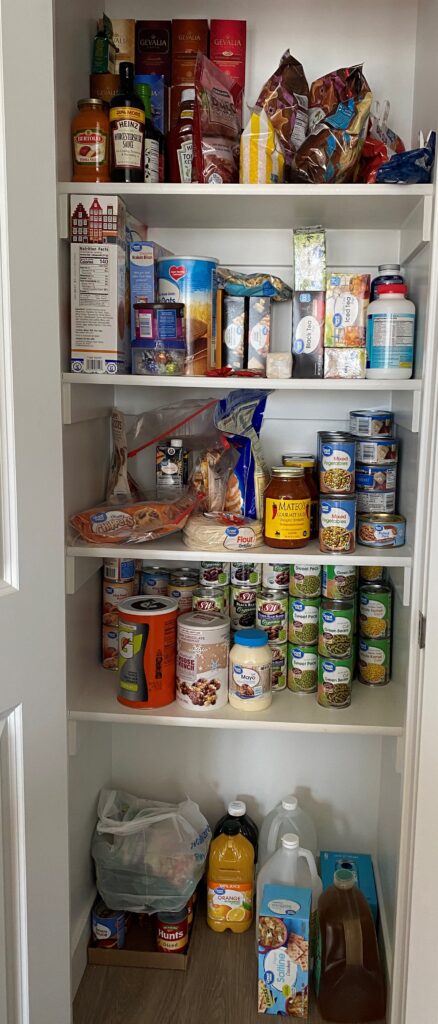
Kitchen Cabinets
In addition to the pantry, I have three cabinets in my kitchen that hold food. One of those is dedicated to storing pasta. It is a quick and easy item to stockpile. Each of these boxes cost $1 at Walmart and they are good for 1-2 years before they expire. I have cases of canned tomatoes, tomato sauce and tomato paste (as well as some jar sauces) in my pantry that I use to make sauces for the pasta (with added spices). It is quick and easy to prepare a meal that makes a lot for very little cost.

At the peak of the pandemic this cabinet was completely full. I had 4 boxes or bags of each type you see. Like the pantry I have used more than I have replaced since things are getting back to normal. I don’t plan on getting too low but I don’t need to have as much as I did last year when we didn’t know which direction the pandemic was going to go.
My other cabinets have a mix of instant potatoes, rice, canned soups, spices, baking products, etc.
Under the Stairs
Utah homes also tend to make use of the dead space under stairs as a storage closet. Early in the pandemic I added shelving to mine to stock on up non-perishable foods so I could reduce my trips to the grocery store from weekly before the pandemic to once a month at the worst of it.
Food
I now have at least a 1 month emergency supply of food and water available if I need it on top of all my regular food. Much of the food is dehydrated camping/backpacking food that will last 25-30 years. Since I use it for camping/backpacking in the mountains I stock up it when it’s on sale and don’t have to worry about it going bad if I don’t use it right away. I also have quite a variety of trail snacks to extend the food reserves and a case of Ramen as a last resort.
Water
I have 4 x 40 bottle cases of water from Costco that would last me 20 days if that is all I had. I use the oldest case each quarter and replace it with a new one so that I always have fresh water. Each case has an expiration date of 16-18 months or longer from time of purchase.
Supplies
I also store my extra zipper bags, cleaning wipes, sanitizing spray, water pitcher filters, batteries, and more in this space.
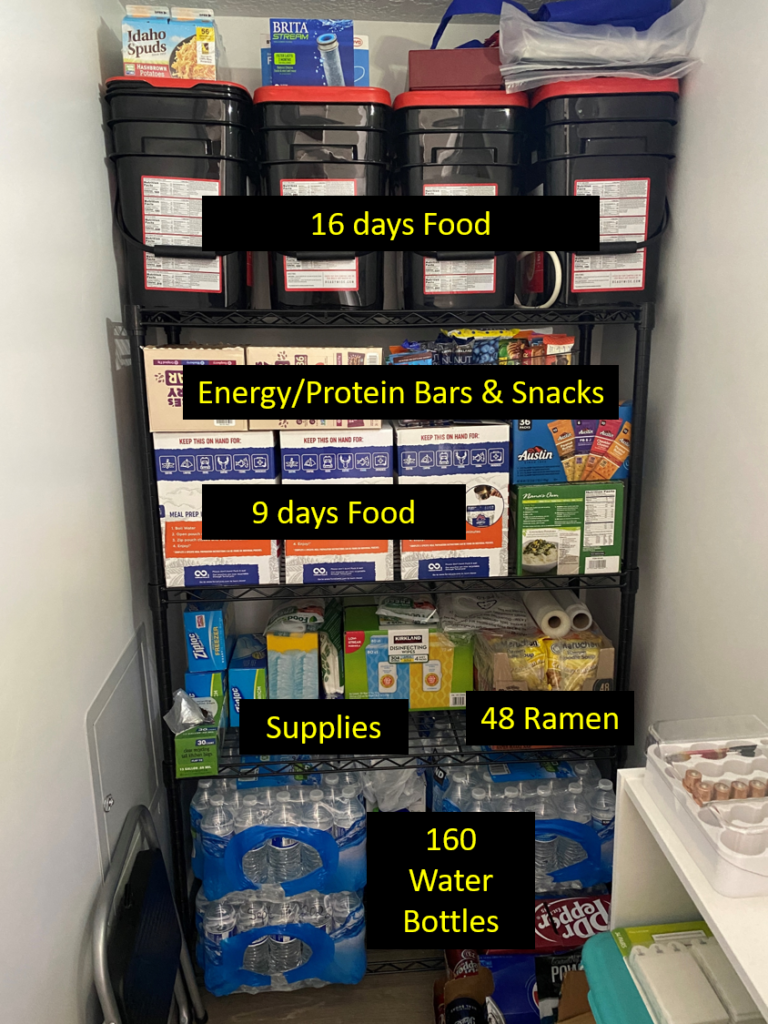
Garage
In the garage I store my extra paper goods. As we all witnessed during the early days of the pandemic, toilet paper was extremely hard to find. And for good reason. What else are you going to use? Americans have not adopted the bidet like most Europeans have and use so you need to make sure you have ample supply of this critical resource. I was fortunate enough to have just purchased a pack before the panic buying started and that lasted me until I could find more later in the summer as stocks started to be replenished.
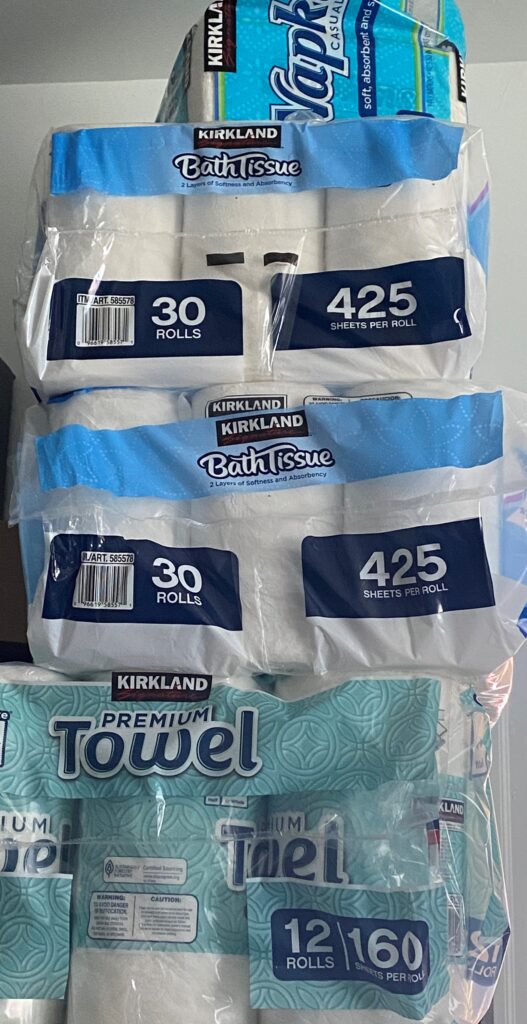
Now, in addition to what I have stored in my bathroom cabinets, I make sure to keep at least 2 packs of toilet paper and 1 pack of paper towels on a shelf in my garage. There are also some paper napkins up there. As soon as I run out in the house and have to take one of the packs from the garage, I make a run to Costco to replace it. It is one of my ‘new normal’ routines. One pack lasts me about 4-5 months so I always have 8-10 months beyond what is already in my bathrooms.
I also have a small chest freezer in the garage that I wrote about in November 2020. It has allowed me to purchase frozen foods in bulk. I easily have 2-3 weeks of frozen meats stored right now and it is about half full. I also have veggies, pizza, hash browns, French fries, buttermilk biscuits and even some White Castle burgers because you know how it is when you get the crave for sliders. While not as good as the drive-through, they do in a pinch.
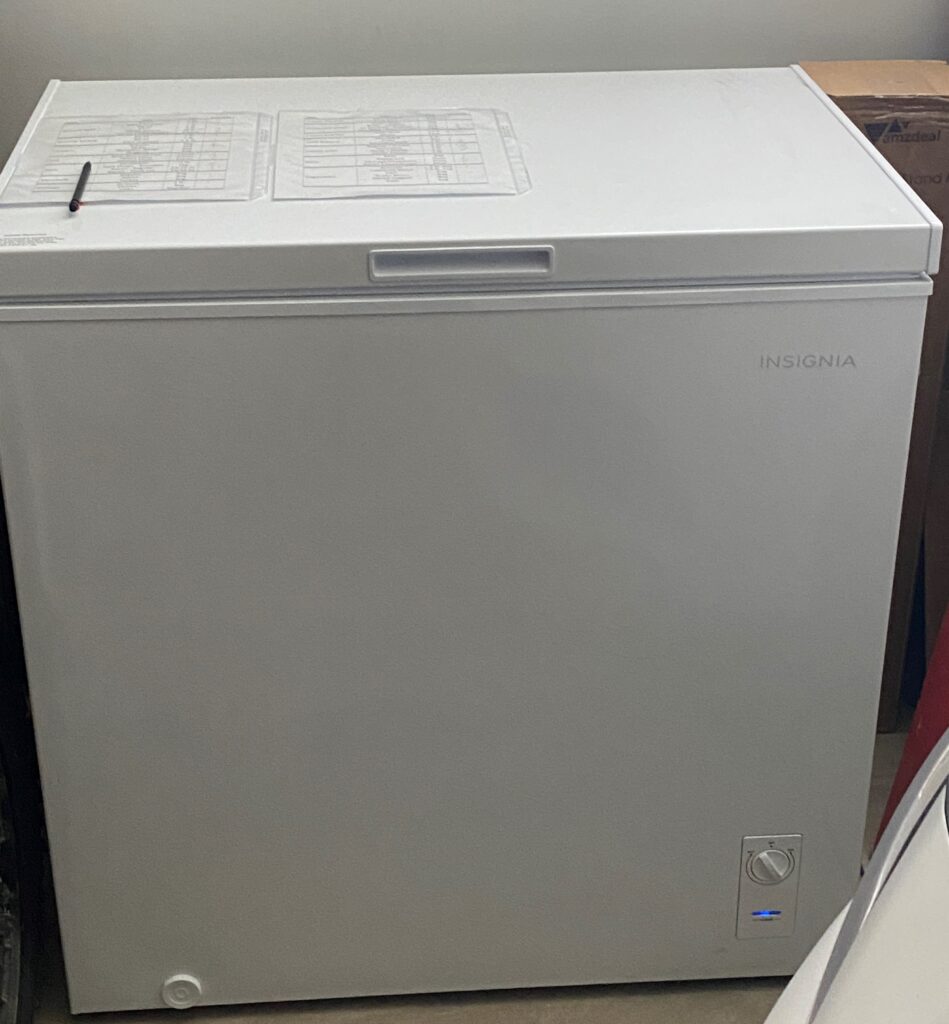
Having Peace of Mind
As you can see my stockpile isn’t huge and doesn’t take up a ton of space in my house but does afford me at least a month of food and water should a disaster strike and I need it.
Mistakes to Avoid
Buying more food than you can use before it expires or goes bad
One of the biggest mistakes people tend to make when stockpiling is buying more food than they can actually use before it expires or goes bad. It is great if you have the money and space to purchase large amounts of goods, but if you noticed in my examples, I purchased only what I can use before it goes bad and I have a plan for using it and replenishing it. That’s because I made this mistake in my previous house in Illinois before moving to Utah. I ended up having to throw out dozens of cans and dry packaged goods that were affected by humidity in the basement where there were stored.
Not rotating your stock
I was also not rotating my stock or keeping track of expiration dates and I ended up throwing money in the trash. Some items were years past their expiration dates. Make sure to place newer items behind items that were purchased previously so that the older stock get used first.
Living in Utah, the humidity situation is no longer an issue, but I do pay closer attention to the types of foods I’m stockpiling and making sure I use them and replenish them on a regular basis. I only buy products I will use and enjoy cooking and eating.
Getting Started
To help get you started with building up reserves and preparing an emergency kit, I have put together a free checklist for you: Emergency Preparedness Checklist – 3 day Bare Essentials (72 hours). This should be enough to get you started on establishing your emergency kit / stockpile and you can go from there.
Last Updated on August 16, 2022
